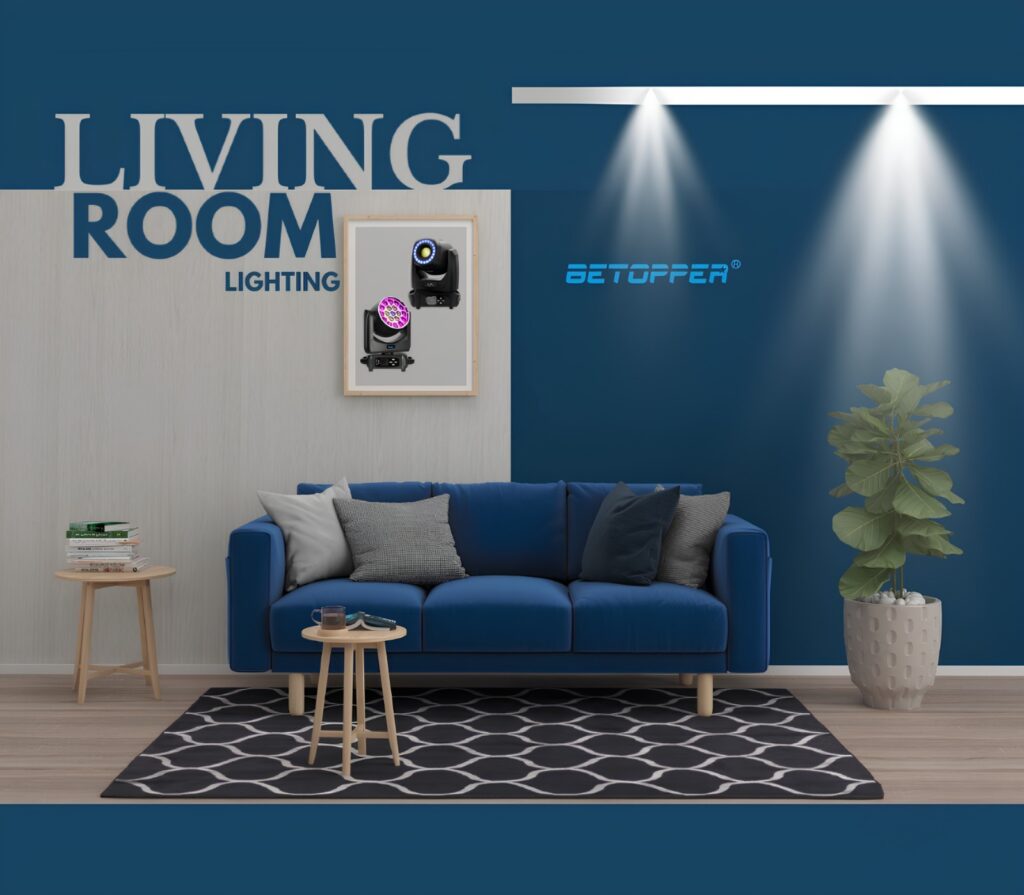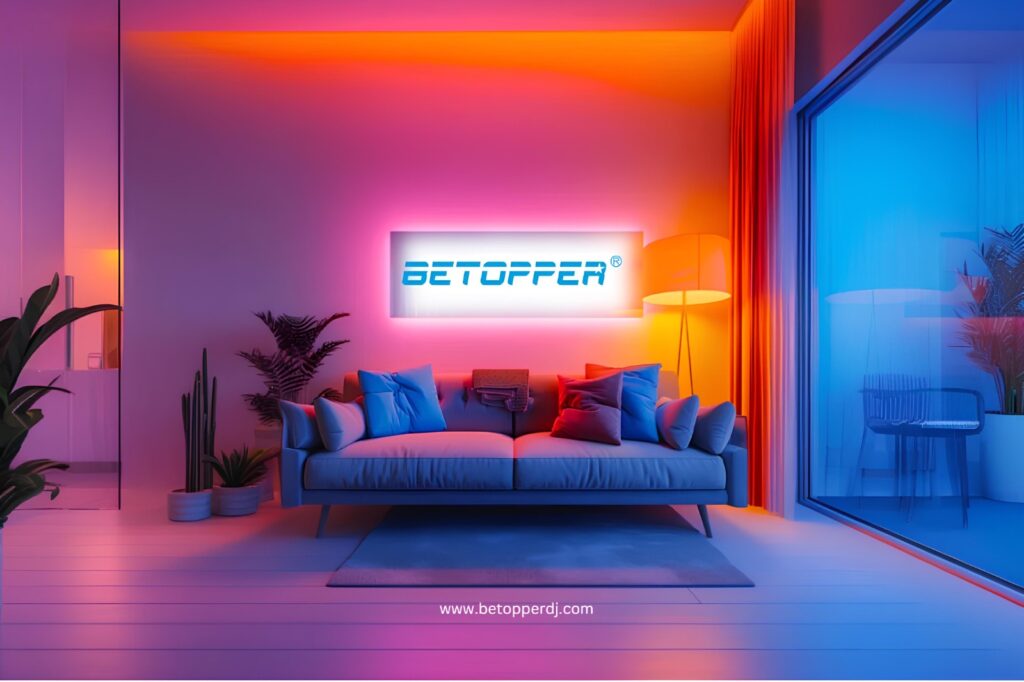Lighting in a living room isn’t just about illumination—it’s about creating the perfect ambiance. Whether you want a bright, energizing space for socializing or a warm, cozy retreat for relaxation, choosing the right lighting can completely transform the atmosphere of your home.
But how do you design the ideal living room lighting setup? Don’t worry—we’ve got you covered! In this guide, we’ll share expert lighting tips, fun facts, and design insights to help you create a stylish, functional, and inviting space that suits your every need.

1. Start with the basics: The Three Types of Lighting You Need
Fantastic lighting is not about throwing a few bulbs into a space. It’s about layering three key types of lighting to achieve balance and function. Let’s see those key lighting options:
Ambient Lighting: This is the basis of lighting for your living room. Consider using chandeliers, ceiling fixtures, or recessed lighting for overhead lighting. They offer overall illumination and are required if we want to achieve a base glow in your space.
Task Lighting: Do you need focused light to read, cook, or work? This is your go-to. As far as lighting goes, LED lights solve the issues of dim ambient lights; they’re perfect for lighting up specific areas, like your reading nook or kitchen counter, where you need a brighter, more direct light.
Accent Lighting: This type of lighting creates a focal point by highlighting elements such as artwork, plants, or architectural features. The key is to create drama and emphasize it while you’re in the living room. In fact, you could consider using stage lights to add some flair and spectacular effects to your space.
2. Think About Function and Mood
What kind of living room do you want? The space’s function determines which types of lighting to install.
Relaxing Corner: If you use your living room as a place for relaxing, then soft lighting is the key. LED Lights that are dimmable are more flexible and multifunctional. A standing lamp in a corner will give you that soft light without overpowering the space.
Entertaining Area: When it’s time for a party, you’ll want lights that can be adjusted to match the mood. When hosting a party, bright overhead lights may suffice, but for a more relaxed atmosphere, stage lights can add a touch of theatrical flair.
- Fun Fact: Did you know that you can actually affect your mood with lighting? Brighter lights can keep you hushed and energetic, while soft lighting has been known to lessen stress!
3. Layer Your Lights Like a Pro
Perfect lighting is all about layering. By combining ambient, task, and accent lighting, you can create a dynamic environment that caters to every need.
For example:
- A calm atmosphere’s shift overhead lights
- LED lights are ideal for reading or focused hobbies.
- You can use it to showcase your preferred artwork or design.
With layers, your living room lighting will feel well-rounded and fully functional, eliminating the need to worry about it being stylish.
4. Dim it down for Drama
A dimmer switch is a game changer. By adding this simple addition, you can change the lighting to fit your mood but still have the final say in the ambiance of the entire living room.
Dim the lights as the sun sets and your heart rate decreases to foster a more intimate and relaxed atmosphere.
Dimming stage lights are wonderful for controlling the light’s brightness, and these are a wonderful addition to a movie night or party.
- Interesting Fact: Did you know that people tend to feel more relaxed in dim light? Because when light is soft, it triggers the production of melatonin, the sleeping hormone.

5. Make Your Lights Stand Out
Lighting fixtures are more than just functional elements—they’re a key part of interior design that can elevate the look and feel of your living room. The right light fixture can make a bold statement, enhance the ambiance, and even reflect your personal style.
From a modern chandelier that adds elegance to sleek LED lights for a minimalist touch, or industrial-style pendant lights that create a trendy, urban vibe—your lighting choices can completely transform your space.
- Interesting Fact: Did you know Thomas Edison wasn’t the first to invent the electric bulb? Humphry Davy created the first version in the early 1800s! Edison later perfected the design, making it practical for everyday use. Today, lighting has evolved into one of the most crucial elements of interior design, blending functionality with style like never before.
6. Save Energy, Save Money
Switching to energy-efficient lighting is a smart choice for both your wallet and the environment. LED lights are an excellent investment, offering long-term savings, reduced energy consumption, and eco-friendly benefits. Unlike traditional bulbs, LEDs use significantly less power while providing brighter, more efficient lighting for your home.
- Interesting Fact: LED lights consume 75% less energy than incandescent bulbs and last up to 25 times longer! That means lower electricity bills, fewer replacements, and a more sustainable home—a win-win for your budget and the planet.
Conclusion: Your Living Room, Your Light Show
If you want to light up your living room, the most important thing is to try to keep everything balanced and offer flexibility. With ambient, task, and accent lighting, you can design a space that is aesthetically pleasing and a place to perform any and every function. It doesn’t matter if you’re reading, entertaining, or kicking back; having the right lighting is everything. Explore the brilliant LED Lights and Stage-Lights, which will help you to transform your living room into the best lighting design into the ultimate lighting haven for the whole family!
For more expert tips on living room lighting and to explore the best home design trends in Washington, check out our latest guides here!


